Events and Parties
Arts Organizations Are Reinventing the Traditional Black-Tie Fundraiser… by Bringing It to Your Couch
From an eight-hour telethon to a "Benefit in a Box," nonprofits are getting creative to keep donors engaged.
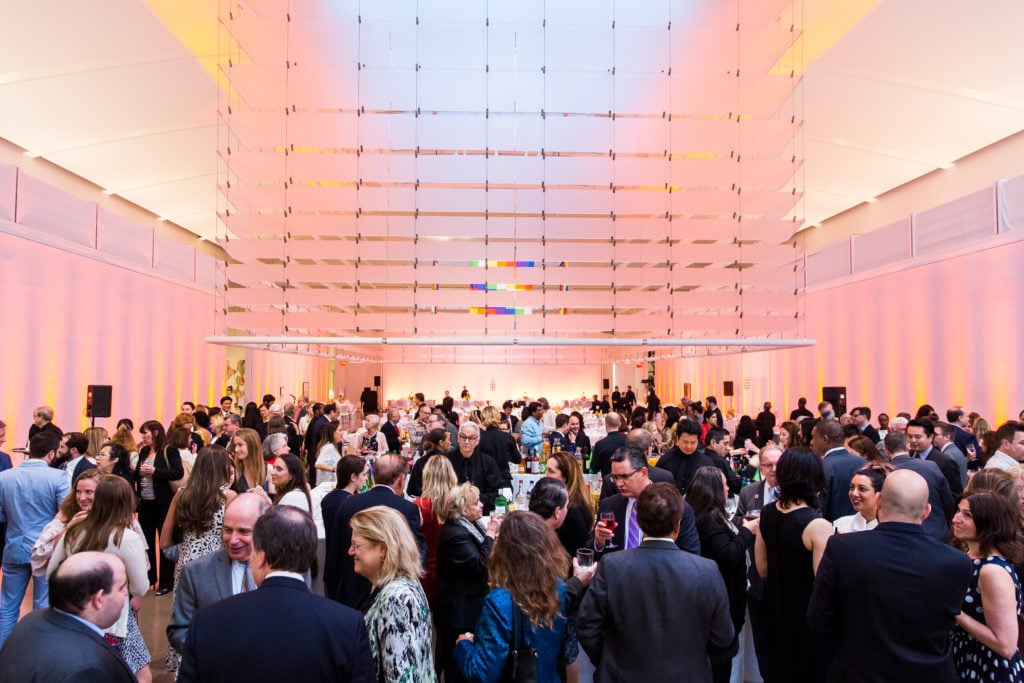
From an eight-hour telethon to a "Benefit in a Box," nonprofits are getting creative to keep donors engaged.

Taylor Dafoe

The arrival of fall in New York City normally heralds the arrival of gala season, when nonprofits hold their glitziest and most lucrative fundraisers of the year. But the social-distancing era is forcing them to think outside the box. Or, to be more precise, it’s forced them to embrace the box—literally.
In a burst of ingenuity, many museums and arts organizations have bundled up the traditional gala experience—the wine, the cheese, the art—into a convenient package for patrons to enjoy at home, often accompanied by live programming on Zoom or another platform.
The stakes are high: the American Alliance of Museums estimated that museums in the US lost $33 million per day during public-health-induced closures (and some may be headed into a second lockdown soon). Plus, back during the spring fundraising season, many organizations were busy navigating PPP loan applications and health crises—developing a novel gala substitute was not exactly top of mind.
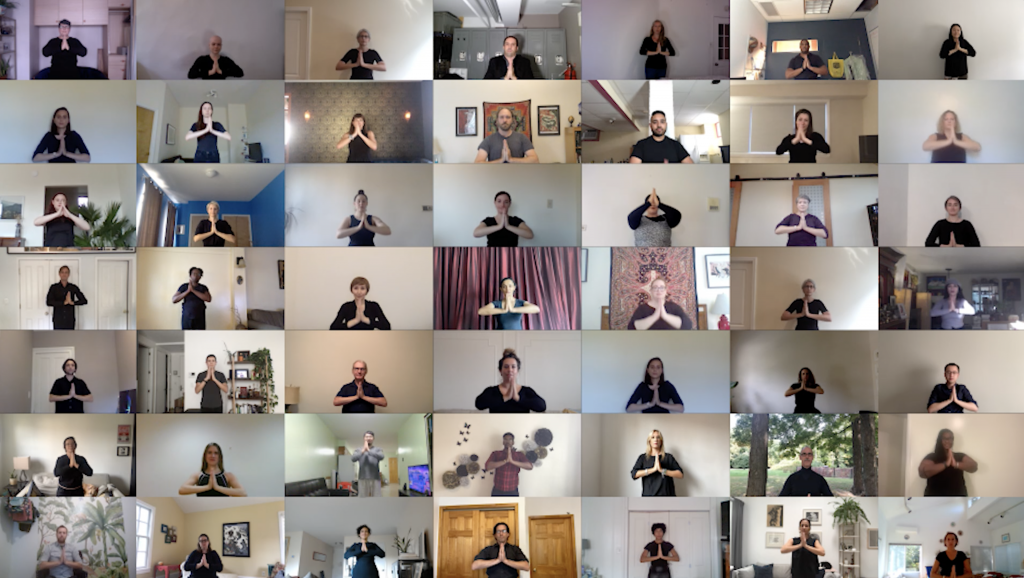
A performance by Rubin Museum staff during the institution’s “Inside the Mandala” virtual gala.
Happily, however, the remote gala strategy has proven surprisingly successful for organizations that normally spend months and tens of thousands of dollars planning lavish live events. And its success has reinforced the notion, growing among some fundraising professionals well before lockdown, that the old fashioned modes of raising money—those expensive dinners and laborious auctions—are overdue for an update.
For its virtual gala on October 27, Independent Curators International, a nonprofit dedicated to promoting the role of the curator in contemporary art, offered its donors a Benefit in a Box, which came with limited-edition artworks and practical items designed by notable artists for the occasion (table linens by Ebony G. Patterson, face masks by Carla Fernández).
Boxes were offered at different donation levels, from the $1,000 “Individual” option (which came with temporary tattoos by conceptual art pioneer Lawrence Weiner) to the $25,000 “Leadership Circle” package (which included an artwork by Angel Otero).
Normally, ICI’s annual benefit and auction raises between 25 and 30 percent of its annual budget. “With this new model and lower event production costs,” says ICI’s deputy director Frances Wu Giarratano, the organization was able to raise 90 percent of what it would have expected from a live event.
The task of adapting the gala format to the stay-at-home age was particularly daunting for Performa, the performance-art biennial known for throwing star-studded, theatrical events. (The 2018 bash honoring Christo and Jeanne-Claude, for example, involved erecting elaborate wrapped scaffolding that served as a stage for suspended performers.) These extravaganzas usually account for a full 45 percent of Performa’s operating budget as well as 10 percent of its programming budget.
In lieu of its annual fall gala this year, Performa is hosting an eight-hour telethon fundraiser. “We are always looking to reinvent the ‘normal’ way of doing things and so we’ve been
incredibly excited to take the annual gala in a totally new direction,” RoseLee Goldberg, founding director and chief curator of Performa, tells Artnet News.
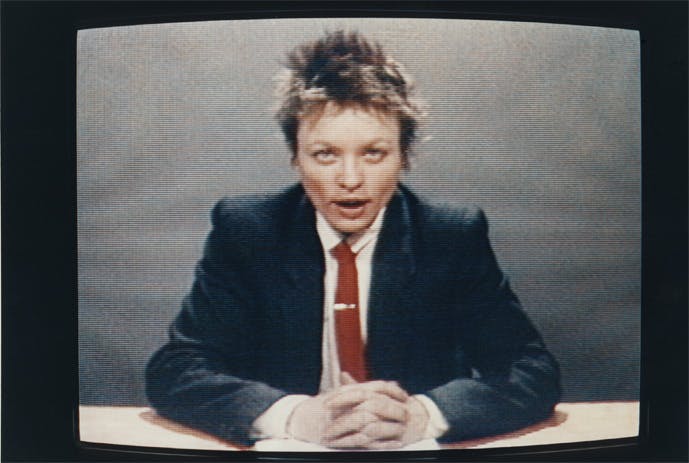
Laurie Anderson in Nam June Paik’s Good Morning Mr. Orwell (1984). Courtesy of Electronic Arts Intermix (EAI), New York.
The event, which will be produced in collaboration with E.S.P. TV and broadcast live from Pace Gallery on November 18th, will feature performances by Jennifer Rubell, Derrick Adams, and Laurie Anderson, among others. Viewers will be encouraged to dial in to or text a phone bank where they can purchase limited-edition home goods by such artists as Korakrit Arunanondchai, Barbara Kruger, and Laurie Simmons.
Goldberg points out that traditional benefits can be quite financially inefficient. “Generally, over 60 percent of any gala budget goes toward the venue, equipment rentals and catering,” she notes. “We have always felt that this way of spending money to raise money seemed wasteful.”
The remote format has the added bonus of putting most of the budget into the pockets of artists and production crews. Goldberg is hopeful the Performa Telethon will or meet or surpass the proceeds of past events. “The telethon provides a real alternative,” she says.
In their quest to capture the attention of donors at home, nonprofits are not only competing with other arts organizations, but also with Netflix and HBO. That’s why many have adopted a common strategy: embrace the brand that supporters have come to know and love, even while keeping them at a distance.
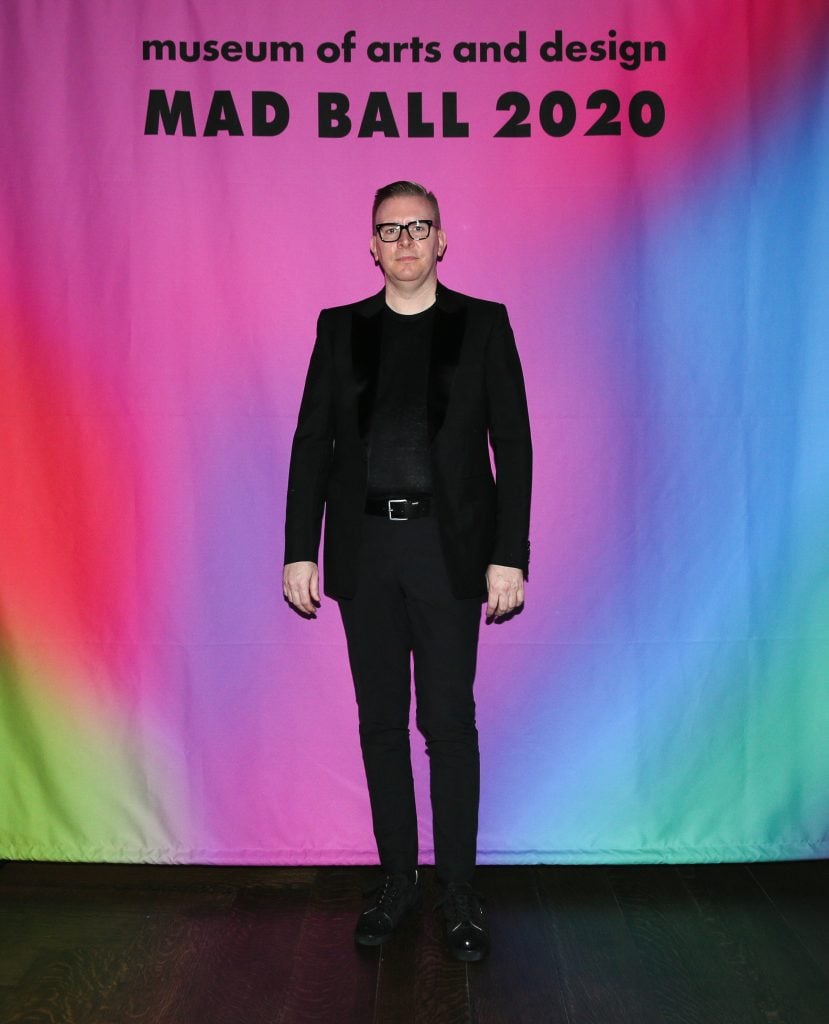
Terry Skoda, Interim director of the Museum of Arts and Design, at the Mad Ball.
The Museum of Arts and Design (MAD) held a virtual edition of its annual MAD Ball in mid-October with a characteristically genre-spanning program: a DJ set by Timo Weiland, a song performed by Rosanne Cash, and a performance by the Alvin Ailey American Dance Theater. The event was broadcast live over Zoom and YouTube, but MAD also hosted small, in-person get-togethers at locations around the world, from New York to New Zealand, so some guests could experience it collectively.
Tiered ticket prices “allowed us to draw our patrons together, attract new audiences, and provided a component of participation and interaction which deeply resonated,” notes Terry Skoda, interim director at MAD.
The MAD Ball typically generates 15 percent of the museum’s annual budget. This year’s virtual version, dedicated to artist Judy Chicago, was no different. (For comparison, a recent survey conducted by the Association of Art Museum Directors estimated admission fees comprised, on average, six percent of a museum’s total revenue during a normal year.)
“The event succeeded because it reflected the spirit of the museum,” the interim director says. “It celebrated and elevated craft while at the same time and in the true spirit of a makers museum, created a new way of hosting an event.”
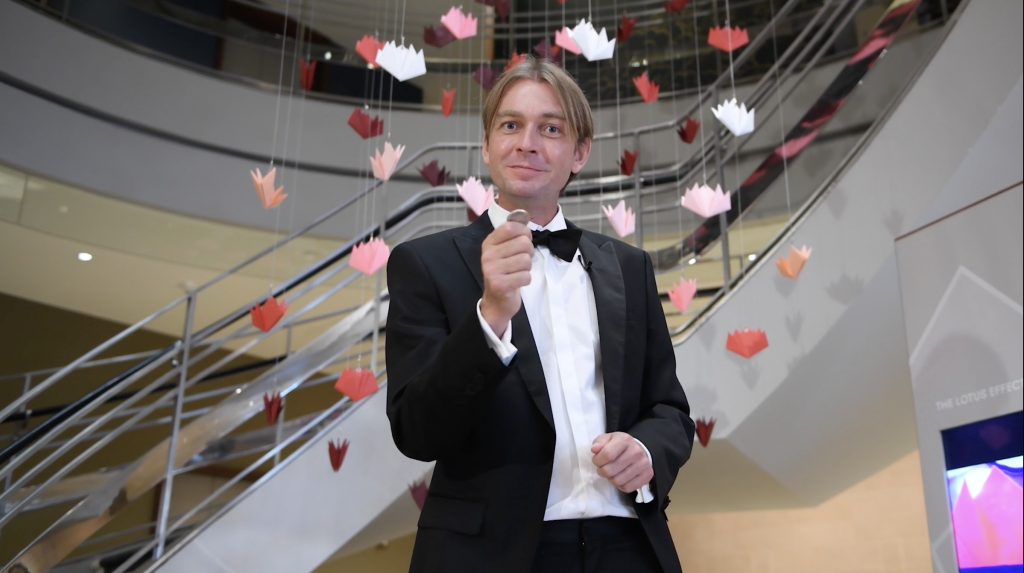
Rubin Museum director Jorrit Britschgi at the institution’s “Inside the Mandala” virtual gala.
New York’s Rubin Museum of Art embraced an even more inclusive approach. Its “Inside the Mandala” virtual gala on October 21 was free to attend; visitors were invited to donate on a pay-what-you-can basis. The museum projected it would generate five percent of its annual revenue from donations; it ended up making double that.
The secret to its success, according to Rubin director Jorrit Britschgi, is that the event wasn’t bound to a specific venue, meaning it could accommodate more attendees and attract more corporate sponsors. In the end, over 2,000 people from around the world signed on.
Britschgi notes that the Rubin had already been moving away from big, eventized fundraising efforts before social distancing became the law of the land. But the success of the virtual gala season may accelerate that shift.
“While [events like that] have long been a cornerstone of nonprofit life, over the years we’ve witnessed a decreasing appetite for traditional gala formats,” Britschgi says. “We’ve therefore been experimenting with new ways for donors to give more directly to initiatives, while also creating the occasions for personal connection that are such an important part of what galas provide.”